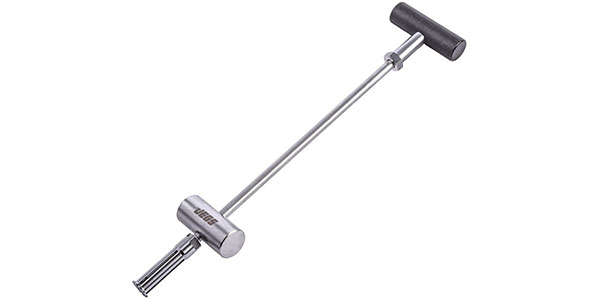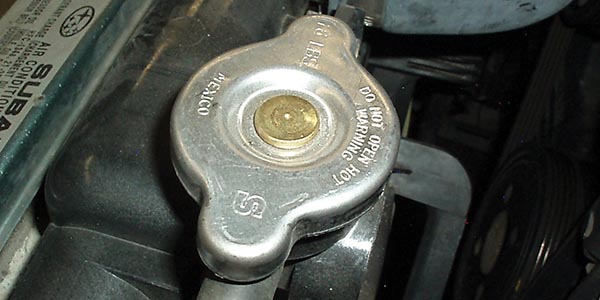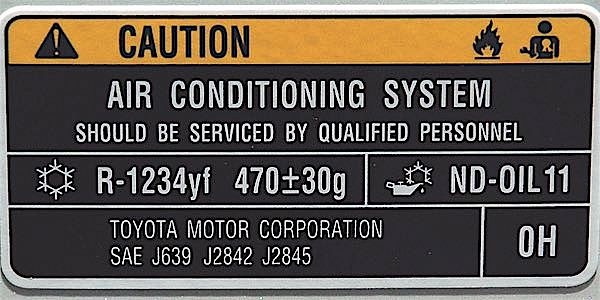Though it isn’t required, many brake experts recommend replacing the drum hardware when the brakes are relined to restore the brakes to like-new condition. But often the hardware isn’t replaced because it doesn’t seem necessary. Unless the hardware is badly corroded or shows obvious signs of stress, like severe heat discoloration or other visible damage, it is often reused. The assumption is that unless it “looks bad,” it must still be OK. That can be a dangerous assumption because there’s no way to know if the return springs still have sufficient tension to retract the shoes reliably for another 40,000 to 60,000 miles.
Rear drum brakes are not serviced as often as front disc brakes because rear brakes don’t work very hard. On most vehicles, they only handle about 15 to 20 percent of the brake load. Consequently, by the time the rear shoes need to be replaced, the front brakes may have already gone through one, two or even three sets of pads.
On many FWD cars today, the rear brakes may only be serviced once during the entire life of the vehicle! So if the hardware in the rear drums isn’t replaced, it’s hard to say how many additional miles the hardware may see before the rear brakes are again serviced. And who can say what effect that may have on brake performance and reliability as the miles accumulate?
According to the latest MAP (Motorist Assurance Program) guidelines, replacement is required if any drum hardware item is broken, distorted, missing, badly rusted or worn to the point where it affects brake performance.
Consider return springs. Many technicians simply reuse the springs without giving them much thought. On a low-mileage vehicle, return springs can often be safely reused – provided the brakes have not been subjected to unusually high temperatures. But, if a shoe was dragging or the vehicle has been used for heavy towing, extended mountain driving or serious off-roading, the condition of the springs may be questionable because heat can cause a spring to lose its temper and weaken.
A weak spring obviously can’t retract the shoes as well as a spring of normal strength. This may allow the shoes to drag causing increased wear and a greater appetite for fuel. Even worse, the added friction generates heat which increases the risk of fluid boil and loss of pedal as well as brake fade.
Other items to pay close attention to or replace include shoe-to-shoe springs, shoe hold-down springs, self-adjusters and parking brake adjuster cables and linkages. Examine cable linkages closely for frayed wires or worn ends. Also check the adjuster levers for wear where they contact the adjuster wheel. If the edge is worn, it may not have enough grip to ratchet the wheel.
If a spring is stretched or discolored, you can assume it has suffered heat damage and must be replaced. But many brake experts say it’s a good idea to replace springs anyway when doing a brake job regardless of their appearance.
Many motorists use their transmission to hold their vehicle instead of the parking brake. Over time, the lack of use may cause the cables to stick or bind. Then, if the parking brake is applied, it may fail to fully release causing the rear brakes to drag. For this reason, the operation of the parking brake system should always be checked when doing a brake job, and any hardware that is corroded or damaged should be replaced.
Any drum hardware that is obviously defective or badly rusted should always be replaced. No excuses. A frozen self-adjuster, for example, can’t keep the shoes in close proximity to the drum and will allow a gradual loss of pedal as the shoes wear. Replacing the self-adjuster is therefore necessary to keep the brakes in proper adjustment.
Always check the parking brake and its hardware. The cables, yoke, return springs and linkages must all work smoothly for the parking brake to release completely. Infrequent use of the parking brake may allow it to freeze up causing the rear brakes to drag. Lubricating the hinge points and cables can keep things moving freely, but any parts that are broken or badly corroded should be replaced.
The cost of new springs and other hardware is only a small portion of a complete brake job. Yet, it can save you many dollars in lost labor revenue if you end up having to do the job over because you reused old hardware.













